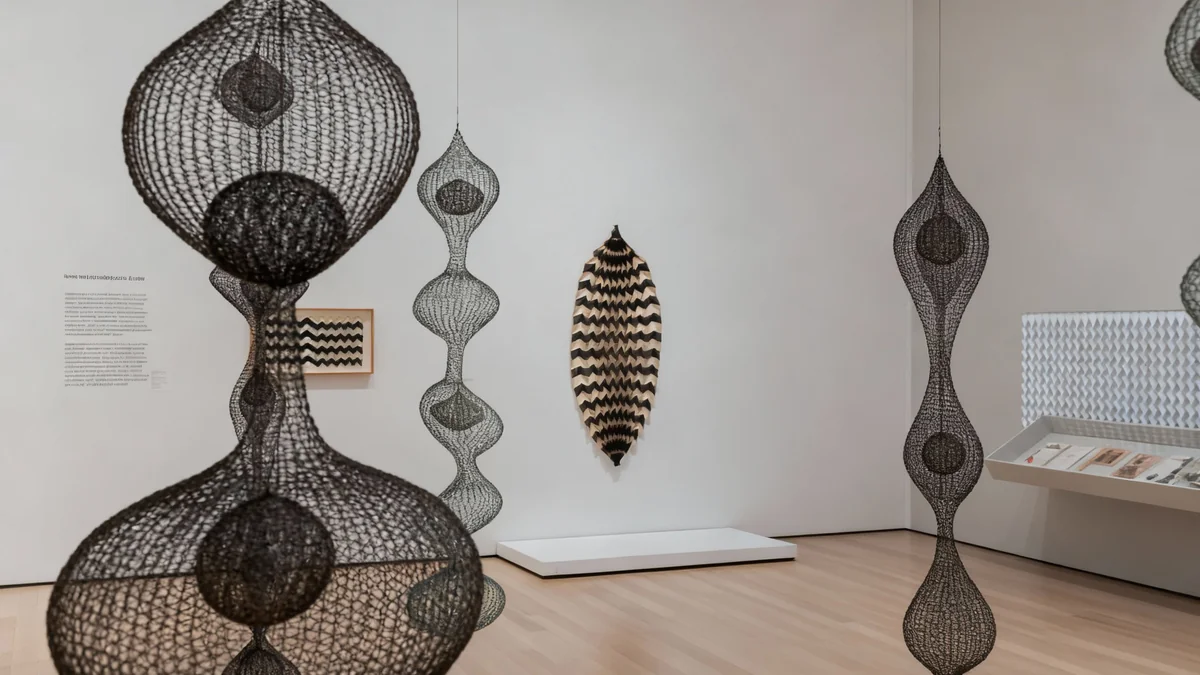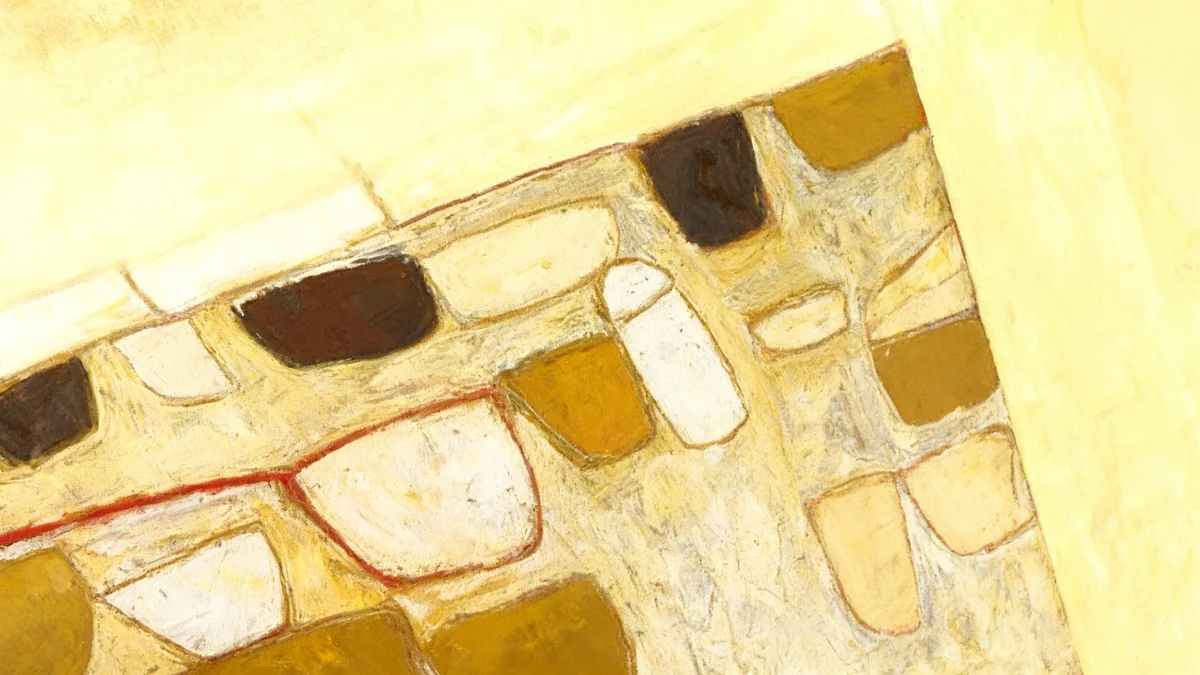A major retrospective celebrating the life and work of Japanese-American artist Ruth Asawa has opened at the Museum of Modern Art (MoMA) in New York City. This extensive exhibition, titled 'Ruth Asawa: A Retrospective,' features over 300 artworks and spans 16,000 square feet. It marks the largest show dedicated to a woman artist in the museum's history, showcasing Asawa's six-decade career.
The exhibition, which previously premiered in San Francisco, highlights Asawa's significant contributions to modern art through her pioneering wire sculptures, drawings, paintings, prints, and public installations. It offers an in-depth look at her artistic evolution and her lasting impact on the art world.
Key Takeaways
- Ruth Asawa retrospective opens at MoMA New York.
- It is the largest exhibition for a woman artist in MoMA's history.
- The show features over 300 artworks across 16,000 square feet.
- Exhibition runs from October 19, 2025, to February 7, 2026.
- Highlights include wire sculptures, drawings, paintings, and public works.
Asawa's Monumental Artistic Journey in New York
The 'Ruth Asawa: A Retrospective' exhibition at MoMA is a significant cultural event. It provides a comprehensive overview of an artist whose work spanned many forms and ideas. Asawa, a trailblazing figure of the mid-20th century, was known for her artistic output, advocacy, and civic engagement.
The New York showing follows a successful run in San Francisco, a city where Asawa maintained a strong, lifelong connection. Her work is deeply rooted in her experiences and observations, reflecting a unique artistic vision that continues to resonate today.
Exhibition Facts
- Number of Artworks: More than 300 pieces.
- Exhibition Size: Approximately 16,000 square feet.
- Duration: October 19, 2025, to February 7, 2026.
- Significance: Largest exhibition dedicated to a woman artist in MoMA's history.
Showcasing Six Decades of Creation
The exhibition meticulously documents Asawa's career, covering more than 60 years of artistic production. Visitors can explore her diverse body of work, which includes her iconic looped-wire sculptures. These sculptures are often celebrated for their delicate yet complex forms, challenging traditional notions of sculpture.
Beyond her wire creations, the retrospective also features a wide array of her intimate paintings, detailed drawings, and various prints. These pieces offer insight into her experimental approach and her mastery across different mediums. Bronze casts and documentation of her monumental public works are also part of the display.
"Ruth Asawa's work redefined sculpture and challenged artistic conventions. This retrospective honors her profound legacy and her relentless pursuit of artistic expression," said a MoMA representative.
The Impact of Ruth Asawa's Art
Asawa's artistic journey was marked by innovation and a deep commitment to her craft. Her unique approach to materials, especially wire, allowed her to create transparent, sculptural forms that play with light and shadow. These works often resemble organic shapes, drawing inspiration from nature and the human body.
Her art is not just visually striking; it also carries a significant cultural weight. Asawa's experiences as a Japanese-American during World War II, including her time in internment camps, profoundly influenced her perspective and her art. She used her art as a tool for expression and connection.
Artist Background
Ruth Asawa (1926–2013) was an American sculptor. She was born in Norwalk, California. During World War II, her family was interned at the Rohwer War Relocation Center in Arkansas. She later studied at Black Mountain College, where she developed her signature looped-wire sculptures. Asawa was also a strong advocate for arts education and public art.
From San Francisco to New York
The journey of 'Ruth Asawa: A Retrospective' from San Francisco to New York highlights the national importance of her work. San Francisco was a crucial city for Asawa, where she lived for many years and contributed significantly to its artistic landscape. Her public sculptures are prominent features in the city.
Bringing this monumental exhibition to MoMA in New York allows a broader audience to engage with her extraordinary achievements. It solidifies her place as one of the most important artists of the 20th century. The exhibition's scale underscores the growing recognition of women artists in major institutions.
According to art historians, Asawa's work continues to inspire contemporary artists. Her innovative use of materials and her commitment to community engagement set a precedent for future generations. The exhibition provides a chance for both long-time admirers and new audiences to experience the depth of her creativity.
Exploring Asawa's Diverse Mediums
While her wire sculptures are perhaps her most recognizable contributions, Asawa's artistic practice extended far beyond them. The MoMA exhibition ensures that all facets of her career are presented. Visitors will see how her drawing skills influenced her three-dimensional work and vice versa.
- Wire Sculptures: Her most iconic pieces, these are intricate, hanging forms created by looping and tying wire.
- Drawings: Often abstract, these works explore line, form, and shadow, sometimes serving as studies for her sculptures.
- Paintings and Prints: Demonstrating her versatility, these pieces showcase her command of color and composition.
- Public Works: Documentation and models of her large-scale commissions, which often involved community participation.
The exhibition includes pieces like "Poppy" (1965), a lithograph, and "Untitled (S.398, Hanging Eight-Lobed, Four-Part, Discontinuous Surface Form within a Form with Spheres in the Seventh and Eighth Lobes)" (1955), a complex brass and iron wire sculpture. These examples illustrate the breadth and depth of her artistic output.
Educational and Cultural Significance
This retrospective serves an important educational purpose. It allows museum-goers to understand the historical context of Asawa's work and its relevance today. The exhibition also highlights her role as an advocate for arts education, a cause she championed throughout her life.
Her legacy extends beyond her artwork to her belief in the importance of creativity for all. The Museum of Modern Art's decision to host such a large-scale exhibition emphasizes Asawa's enduring cultural impact. It is a testament to her vision and her ability to create art that transcends time and medium.
The exhibition runs until February 7, 2026. This period offers ample opportunity for art enthusiasts, students, and the general public to experience the unique world of Ruth Asawa. It is a must-see for anyone interested in 20th-century American art and the history of women artists.




